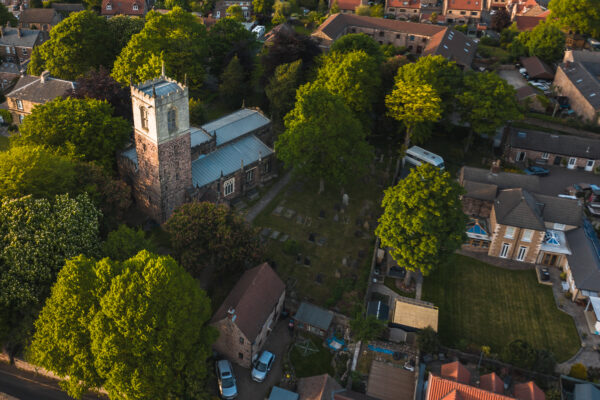The Diocese of Sheffield is called to grow a sustainable network of Christ-like, lively and diverse Christian communities in every place which are effective in making disciples and in seeking to transform our society and God’s world.
This is, of course, our shared vision as a Diocese. Less immediately obvious, is the fact that in today’s world people live their lives across physical and online spaces without ever really thinking about the boundary in between.
Your church website can be an extension of our shared vision and your church’s mission and ministry; extending your welcome, message and community far beyond the physical boundaries of a building or service. An effective church website can give online visitors a window into the authentic life and worship that they are being warmly invited to join. More than the simple transfer of information, a well-planned website can demonstrate the values at the heart of a worshipping community.
Here are 7 principles that can help you consider the effectiveness of your current website:
- Website Purpose
- Simplicity
- Navigation
- Visual Hierachy
- Content Planning
- Consistency
- Mobile Friendly
1. Website Purpose
Your church website needs to understand the needs of the typical visitor. Having a single clear intention on all pages will help the visitor interact with what you have to offer. Yet, the overall purpose of the website will create a sense of progress as visitors navigate your website. What is the overall purpose of your website? How does that purpose shape everything else?
Missional church websites do at least four things:
- Acknowledge visitors with a warm welcome.
- Communicate the heart and values of the church.
- Provide basic information in a useable and action-able format.
- Create opportunities for interaction with relevant church members/leaders.
2. Simplicity
In the early days of the internet, websites used to be cluttered, crowded and uber-colourful. As time goes on simplicity is a far more effective way to ensure visitors enjoy using your church website.
Colour
Colours evoke emotions and influence website visitor’s behaviour. Using a limited colour palette (2-4) of complementary colours can help communicate your key messages, increase engagement and make visitors feel good. The use of white and off-white for backgrounds also increases the sense of simplicity.
Font
Typography, or font choice, has an important role to play on your church website. The way you present text works as the visual interpretation of your church’s message. Fonts should be legible and only use a maximum of 3 different fonts on the website. Bold text should be used sparingly to draw attention to key information.
Imagery
Most of the initial information we consume on websites is visual and as a first impression, it is important that high-quality images are used to communicate key messages. All imagery should be expressive and capture the DNA of the church and embody what is of most value to the church.
3. Navigation
Navigation is the system that visitors use to find what they are looking for on a website.
It is important to keep navigation simple, intuitive, and consistent on every page. If navigation is confusing, visitors will give up and find what they need elsewhere. Keeping page title short and relevant can go a long way to helping navigation. Even better is to make sure that your website only the very minimum amount of necessary pages and information.
4. Visual Hierachy
Visual hierarchy is the arrangement of elements in order of importance.
This is done either by size, colour, imagery, contrast, typography, whitespace, texture and style. One of the most important functions of visual hierarchy is to establish a focal point; this shows visitors where the most important information is. If everything appears important on a web page, then nothing will stand out to the visitor and everything inevitably appears to have equal importance.
Here’s an example of how visual hierachy works:

5. Content Planning
A website’s content is vitally important. An effective website is one where the visitor enjoys finding what they are looking for.
Website content consists of four basic elements: Text, Images, Video and Links (Hyperlinks/buttons etc). Producing website content isn’t just about having the right combination of those four basic elements, but also includes giving focus and priority to elements based on the purpose of the website. Considering the tone of voice being used on the website can also make a church website more welcoming to a user.
A missional Church Website should include the following sections/pages:
- Main Welcome
- Safeguarding
- Key information church services
- General information about the church
- Contact
6. Consistentcy
Visitors to your website will expect a consistent experience.
- English is read from left to right. Most of what people see is in the top and left areas of the screen. An effectively designed website will work with, and not against, a reader’s natural pattern of scanning the page.
- An effectively designed website will also arrange content into a clean rigid grid structure with columns, rows and sections that line up. That will impose order and results in an aesthetically pleasing website.
- Visitors don’t want to wait 30 seconds for a webpage to load and if they are forced to, it likely they will leave the page after far less than that. Optimising image sizes will help load your site faster.
7. Mobile Friendly
In today’s world, more and more people are using their phones or other devices to browse the web.
This means that it is important for church websites to be responsive, meaning that they can adjust to different screen sizes. It is important to consider the typical user of your church website and what they tend to want from their visit. Each user should have the sae quality of experience regardless of the device they are using.
Inspiration from around the Diocese
- For an engaging use of A Church Near You – St Matthew’s, Carver Street
- For a visitor focused low cost church website – St Nicholas, Thorne
- For a visually appealing agency designed church website – Gleadless Valley Parish Church
Here to Help…
Creating a warm online welcome involves making sure your website design is both functional and aesthetically pleasing. A website can be a significant tool for discipleship and transformation when we consider its users and potential, and then plan accordingly.
Advisors are ready to help you move your website forward in the warmth of its welcome.
Regardless of the state of your current church website, support will always begin with a conversation. Get in touch with us today.


